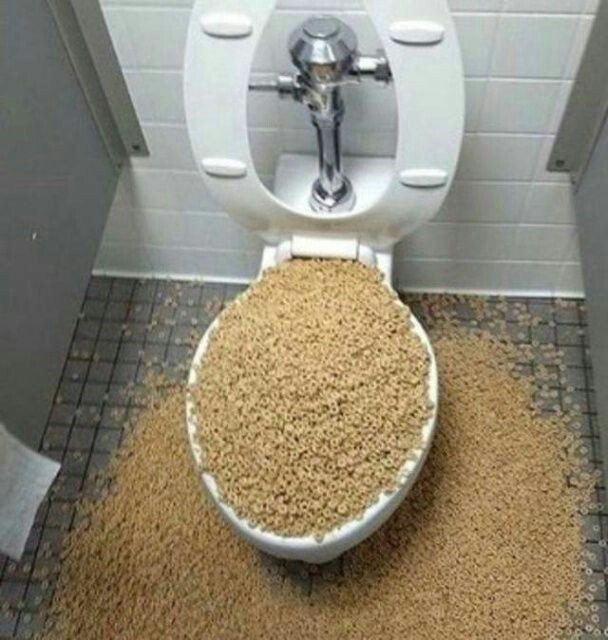Is it Recommended to Dispose of Food Down the Toilet?
Is it Recommended to Dispose of Food Down the Toilet?
Blog Article
Just how do you actually feel on the subject of Is it safe to flush food (especially rice) down the toilet??

Introduction
Lots of people are usually confronted with the problem of what to do with food waste, specifically when it involves leftovers or scraps. One usual question that arises is whether it's okay to flush food down the bathroom. In this write-up, we'll delve into the reasons why individuals may think about flushing food, the effects of doing so, and different methods for proper disposal.
Reasons why people could take into consideration purging food
Absence of understanding
Some people may not know the potential damage triggered by flushing food down the toilet. They might wrongly believe that it's a harmless method.
Benefit
Flushing food down the toilet may look like a quick and easy remedy to disposing of unwanted scraps, particularly when there's no nearby trash can offered.
Negligence
In many cases, people may just choose to flush food out of large laziness, without considering the repercussions of their actions.
Effects of flushing food down the commode
Environmental influence
Food waste that ends up in waterways can add to air pollution and injury marine communities. Furthermore, the water made use of to flush food can strain water resources.
Plumbing concerns
Purging food can lead to clogged up pipes and drains, creating costly pipes repairs and troubles.
Sorts of food that must not be purged
Coarse foods
Foods with fibrous appearances such as celery or corn husks can obtain tangled in pipes and trigger obstructions.
Starchy foods
Starchy foods like pasta and rice can soak up water and swell, leading to clogs in pipes.
Oils and fats
Greasy foods like bacon or cooking oils should never ever be purged down the toilet as they can strengthen and create clogs.
Appropriate disposal approaches for food waste
Utilizing a garbage disposal
For homes equipped with garbage disposals, food scraps can be ground up and flushed via the plumbing system. However, not all foods appropriate for disposal in this way.
Recycling
Particular food product packaging products can be reused, minimizing waste and decreasing ecological effect.
Composting
Composting is an environmentally friendly means to take care of food waste. Organic products can be composted and utilized to enrich dirt for gardening.
The importance of appropriate waste monitoring
Decreasing environmental injury
Correct waste management methods, such as composting and recycling, aid lessen contamination and protect natural resources for future generations.
Shielding pipes systems
By staying clear of the technique of flushing food down the commode, homeowners can prevent expensive plumbing repair services and maintain the stability of their pipes systems.
Conclusion
To conclude, while it might be alluring to purge food down the toilet for convenience, it is essential to understand the potential repercussions of this action. By embracing appropriate waste management techniques and dealing with food waste responsibly, people can contribute to healthier pipes systems and a cleaner setting for all.
FLUSH FOOD DOWN THE TOILET?
FLUSHING FOOD CAN CAUSE BLOCKED DRAINS IN YOUR HOME
All of the plumbing fixtures in your home are connected to the same sewer pipe outside of your home. This outdoor sewer pipe is responsible for transporting all the wastewater from your home to the Council sewer mains. Even small pieces of food that go down the kitchen sink can cause problems for your sewer. It should therefore be obvious that flushing larger bits of food, such as meat, risks a clog in either the toilet itself or the sewer pipes. Flushing greasy food is even more problematic because oil coagulates when it cools, coating the interior lining of your pipes.
THE TOILET IS NOT A BIN
Food isn’t the only thing that people shouldn’t be flushing down the toilet. People use the toilet to dispose of all kinds of things such as tampons, makeup wipes, dental floss, kitty litter and even underwear. Water goes to great lengths to educate residents about the high costs and stress placed on wastewater treatment systems simply from people flushing the wrong stuff down the toilet. It costs taxpayers millions of dollars each year, and homeowners thousands in blocked drain repairs.
FLUSHING FOOD IS A WASTE OF WATER
Flushing food is a waste of our most precious resource - water. In June this year Level 1 water restrictions were introduced to protect water supply from drought conditions. Much of New South Wales continues to be affected by prolonged drought with recent figures revealing up to 97 per cent of the state remains in drought. Depending on whether you have a single or dual flush toilet, every single flush uses between five and 11 litres of water. In the current climate this is a huge amount of water to be wasting on flushing food that should be placed in the bin (or better yet, the compost).
https://www.jabplumbingsolutions.com.au/blog/can-you-flush-food-down-the-toilet

We are very taken with Flushing Food Down the Toilet? and I really hope you appreciated the blog posting. Sharing is nice. You never know, you could be doing someone a favor. Thanks for your time spent reading it.
Free Estimate Report this page